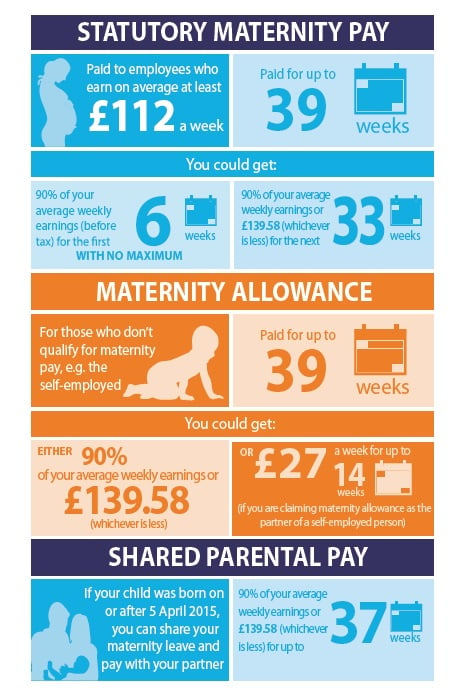
Preparing for the arrival of a new baby can be an incredibly exciting but stressful time, with lots of questions and surprises as you get ready for the big day.
One important factor is how the impending birth will impact your work, whatever your gender. Legal & General has partnered with Rough Guides to create the free to download eBook, Rough Guide to Work and Money, filled with useful information to help you understand your rights if you’ve got a baby on the way.
Here‘s some information from the guide to help you prepare for time off work:
Maternity Leave
A woman has the right to take up to a year off work, although maternity pay is only available for a maximum of 39 weeks. You must let your employer know the date you want your maternity leave to start by the end of the 15th week before your baby is due.
You might need to provide a medical certificate showing when your baby is due. This is called form MATB1 and you can get it from either your midwife or GP.
Maternity leave consists of two parts:
- Ordinary Maternity Leave – this applies to the first 26 weeks of maternity leave. During this period, you will be able to build up holiday and receive pay increases as you would if you were at work, even though you won’t get your normal pay unless your contract states otherwise.
- Additional Maternity Leave – this applies to the next 26 weeks of maternity leave, which must follow on directly from your Ordinary Maternity Leave. Once this has finished, you have the right to go back to your job provided it is still available. If it isn’t, then you must be offered appropriate similar employment.
Paternity Leave
As a father, you can take either one or two consecutive weeks off work when your baby is born. This is known as Ordinary Paternity Leave and it also applies if you and your partner are adopting a child.
Your paternity start-date must be either the actual date of birth, or an agreed number of days following the baby’s arrival.
Shared Parental Leave and Pay
You may be eligible for Shared Parental Leave and Pay, a new system which aims to give parents greater flexibility when it comes to arranging childcare.
Mothers will still take at least two weeks of maternity leave straight after the birth, but after that up to 50 weeks of leave and 37 weeks of pay can be shared between parents. Statutory shared parental pay is £139.58 per week or 90% of your average weekly earnings, whichever is less.
Your employer might offer a more generous parental pay or maternity package, so read the small print of your contract carefully.
Maternity Pay
You are eligible for Statutory Maternity Pay (SMP) if you’ve been with the same employer for at least 26 weeks up to the fifteenth week before the week you are due to give birth, and have been earning on average at least £112 a week (in the 2015–16 tax year).
You can start your maternity leave from as early as 11 weeks before your baby is due, right up until the day after your baby is born.
By law you must take at least two weeks off work after your baby’s birth.
You’ll need to tell your employer that you want to stop work to have a baby, and let them know the date you want your maternity pay to start, in writing if they ask you to. You have to give them at least 28 days’ notice and you’ll also have to provide proof that you’re pregnant, such as a doctor’s note.
Returning to Work
If you think the employment you have been offered on your return from Additional Maternity Leave isn’t appropriate, let your employer know immediately. If the situation remains unresolved, you should follow your company’s complaints procedure.
If this doesn’t work and you are a member of a trade union, contact them for advice.
Alternatively, speak to a specialist at the Advisory, Conciliation and Arbitration Service (ACAS) who can help you resolve your dispute. You can do this by contacting the ACAS helpline on 0300 123 1100 or by visiting the ACAS website.
For more information, have a look at the infographic below and download the free eBook from at www.roughguidefinance.com

For more news from Legal & General, follow them on Twitter @landg_uk
Do you have any essential tips to help people get ready to go on maternity or paternity leave? Share them with us below or tell us on Twitter @reedcouk





